Behind the Scenes: Scenic and Costume Design of Falsettos
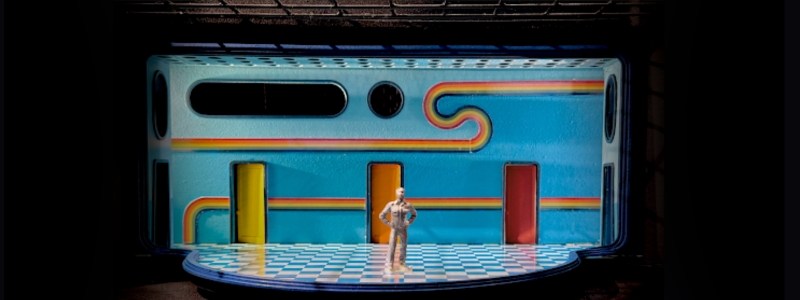
Falsettos Director Nick Bowling has described William Finn and James Lapine’s Falsettos as a work of Impressionism, detailing how the characters are doing an impression of family, or an impression of a relationship, or an impression of a marriage. It’s only fitting, then, that the set (designed by Arnel Sancianco) and the costumes (designed by Theresa Ham) take the audience on a similar journey.
In this staging of Falsettos, produced in partnership with TimeLine Theatre Company, we abandon the world of literalism. Instead, we tell the story of Marvin and his family—a story of coming out, coming into one’s own, love, and loss—through movement, color, and feeling. Read on to learn how.
Scenic Design
Arnel: Welcome to Falsettoland. This production holds a special place in my heart, as it beautifully captures the complexities of love and identity.
To bring this story to life, Nick and I drew inspiration from the vibrant colors of the late 1970s and the playful hues of vintage board games. As you step into our world, you’ll notice the lively palette surrounding the space and the bright colors, evoking a sense of nostalgia, reminiscent of a time when life felt more carefree and fun. However, beneath this cheerful exterior lies a deeper exploration of the characters and their motivations, akin to moves on a chessboard. As we watch these characters interact, it becomes clear that each choice is more strategic, reflecting their desires, fears, and longing for connection. These moves drive the narrative, creating a tapestry of relationships both exhilarating and challenging. As we journey through this colorful world, we must acknowledge that life is not just a game. The playful atmosphere serves a purpose. It’s a powerful reminder that while we may play the game of life with laughter and joy, we must also confront the serious moments that define our existence.
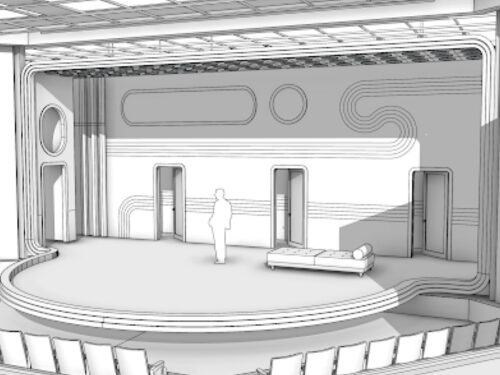
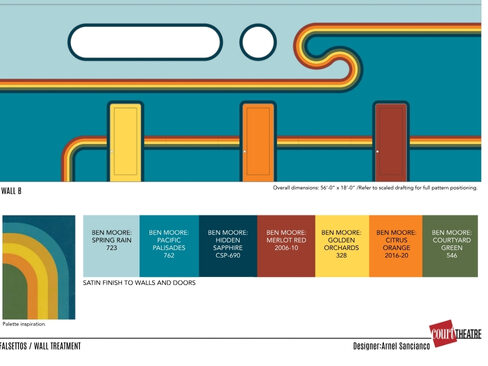
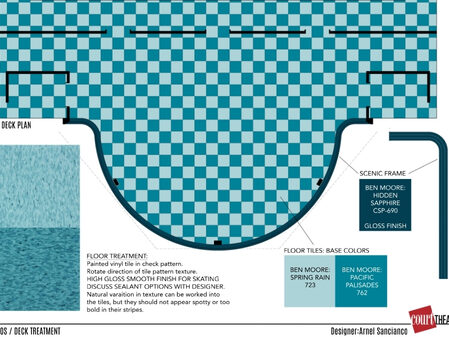
This design for Falsettos aims to create a compelling experience that mirrors the characters’ emotional journeys, the sudden twists and turns of the rainbow road of life. I look forward to sharing this incredible journey with all of you, and I am so honored to have created this world for the cast and the creatives of Falsettos. Welcome home.
Costume Design
Theresa: We wanted to keep the characters rooted in the relevant time periods, namely the late ’70s for Act One and the early ’80s for Act Two. Each character has a color story and, much like Arnel’s set, the costumes lean into the idea of board games or gameplay: each character is given a signature color, and that color story carries them throughout the whole show. Marvin is in blue, Whizzer is in red, Trina is in green, Mendel is in yellow, and Jason is in orange. When we get into Act Two, we have Cordelia in teal and Dr. Charlotte in purple.
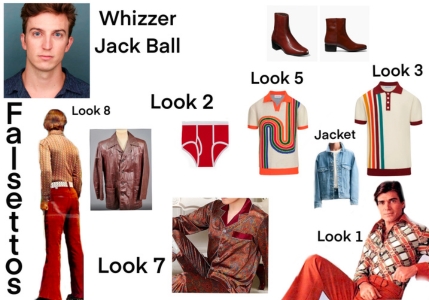
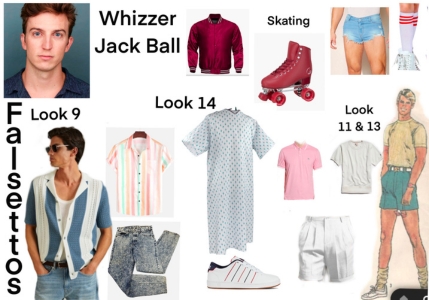
The color story for the players in Act One starts very boldly. As we move into Act Two, the colors move from the bold, bright, punchy colors of the ’70s into the more airy, tertiary, pastel colors of the ’80s (that’s where we see the purple and the teal for Cordelia and Dr. Charlotte). As Act Two progresses and the play takes a more serious turn for Whizzer, we start to see the color from every one of the characters bleed out of the world. By the end of the play, each of the characters is left in gray, with Whizzer at the end in white.
Falsettos is onstage from November 8 – December 8, and tickets are available online or by calling the Box Office at (773) 753-4472. Join us in Falsettoland!